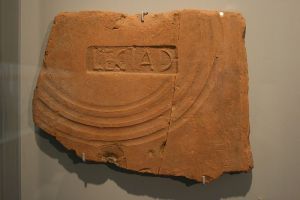L egio I Adiutrix (“helper”, “helper”) was probably formed by Galba on the order of Nero in CE 68. The last information about this legion comes from 444 CE. while stationed in the town of Shony (Brigetio) in the Roman province of Pannonia. The symbol of the legion was Capricorn, used interchangeably with Pegasus.
In “the Year of the Four Emperors” the legion fought first on the side of Galby and then in the Battle of Bedriacum on the Otho side, where he was defeated by Vitellius. In 70 CE he had already fought in the Batava uprising.
Mainz (Moguntiacum) is the first known permanent legion camp, shared with legio XIV Gemina. In 83 CE both legions fought against the Chatti, a tribe settled across the Rhine, in the wars in Germania led by Emperor Domitian. Subsequently, Legio I Adiutrix was transferred to the Danube Army stationed in Pannonia (camp at Szony-Brigetio) and involved in fighting the Dacians.
After the murder of Domitian in 96 CE. The I Adiutrix, along with the Danubian army, played an important role in the politics of the Empire, forcing Nerva to adopt Trajan as his successor. When Trajan became emperor, he nicknamed the legion pia fidelis – “loyal and grateful”, appreciating his support. In 101-106 CE, along with legio IV Flavia felix and legio XIII Gemina, he participated in the conquest and occupation of Dacia. Trajan used legio I Adiutrix pia fidelis also during the campaign against the Parthian state in 115-117 CE. He was then sent back to Pannonia (Shony-Brigetio) by his successor, Hadrian.
For the next decades, the 1st Legion remained on the Danube line. In the years 171-175 CE its commander was Pertinax, emperor for a short period in 193 CE. When Septimius Severus became Emperor of I Adiutrix, he was one of those legions who supported him on his march to Rome. During the following decades, the legion was mainly stationed in Pannonia but played a role during the party campaigns of 195, 197-198 (Septimius Sever), 215-217 (Caracalla) and 244 CE (Gordian III).
Legio I Adiutrix received the nickname pia fidelis bis – “twice loyal and faithful” and constans – “permanent/unchanging” during the 3rd century CE.







